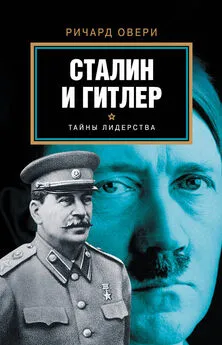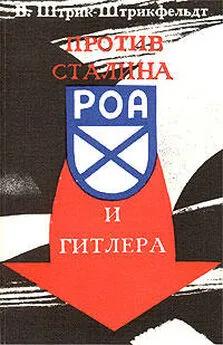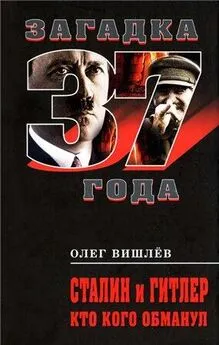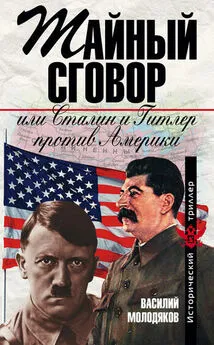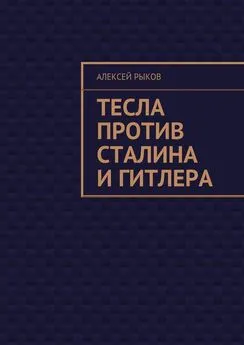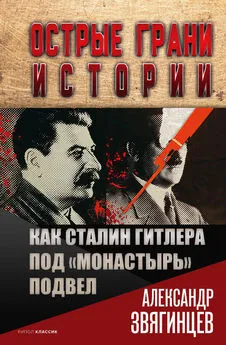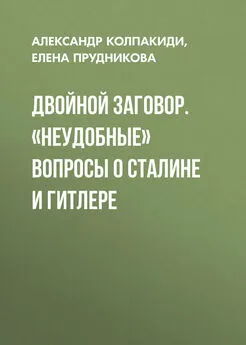Ричард Овери - Сталин и Гитлер
- Название:Сталин и Гитлер
- Автор:
- Жанр:
- Издательство:АСТ
- Год:2015
- Город:Москва
- ISBN:978-5-17-082961-3
- Рейтинг:
- Избранное:Добавить в избранное
-
Отзывы:
-
Ваша оценка:
Ричард Овери - Сталин и Гитлер краткое содержание
Что это были за личности?
Какими были методы их правления?
В чем мораль диктатуры как таковой и к чему она ведет?
На эти и другие наболевшие вопросы отвечает известный британский историк, автор крупных работ по истории Второй мировой войны Ричард Овери.
При сравнение и сопоставление двух режимов Овери рассматривает степень и характер народной поддержки, очаги противостояния и сопротивления, путь к власти каждого из диктаторов и процесс формирования культа личности и т. д.
Сталин и Гитлер - читать онлайн бесплатно полную версию (весь текст целиком)
Интервал:
Закладка:
47. IWM, FO 645 Box 161, testimony of Baldur von Schirach, 15 September 1945, p. 5.
48. Kotze and Krausnick, ‘Er spricht der Führer’, p. 160.
49. D. Orlow The History of the Nazi Tarty. Vol. 2: 1933–1945 (Newton Abbot, 1973), pp. 333–6.
50. Orlow, History of the Nazi Party, pp. 422–3, 458–9, 466.
51. Hubert, Uniformierter Reichstag, pp. 57, 220–26.
52. A. Resis (ed.) Molotov Remembers: Inside Kremlin Politics (Chicago, 1993), pp. 38–9.
53. See the discussion of ‘weak dictator’ in Moll, Führer Erlasse, pp. 9–29; see too D. Rebentisch Führerstaat und Verwaltung im Zweiten Weltkrieg (Stuttgart, 1989).
54. H. Mommsen ‘Hitlers Stellung im nationalsozialistischen Herrschaftssystem’, in G. Hirschfeld and L. Kettenacker (eds) Der Führerstaaf: Mythos und Realität (Stuttgart, 1981), pp. 43–70.
55. See, for example, J. P. Duffy Hitler Slept Late And Other Blunders That Cost Him the War (New York, 1991), esp. ch 11 ‘profi le of a bungler’. On Hitler’s work pattern in the 1930s see K. Krause Zehn Jahre Kammerdiener bei Hitler (Hamburg, 1950), pp. 13–22, who describes his daily routine in the 1930s and early in the war.
56. See Pavlova, ‘Strengths and Weaknesses’, pp. 23–37; S. Pons ‘Stalinism and Party Organisation (1933–48)’, inj. Channon (ed.) Politics, Society and Stalinism in the USSR (London, 1998), pp. 93–4.
57. G. A. Bordiougov ‘The Transformation of the Policy of Extraordinary Measures into a Permanent System of Government’, in Rosenfeldt, Jensen and Kulavig, Mechanisms of Power, pp. 122–40.
58. See, for example, I. Kershaw ‘Working Towards the Führer: refl ections on the nature of the Nazi dictatorship’, in I. Kershaw and M. Lewin (eds) Stalinism and Nazism: Dictatorships in Comparison (Cambridge, 1997), pp. 88–107.
59. See, for example, S. Fitzpatrick ‘Blat in Stalin’s Time’, in S. Lovell, A. Ledeneva and A. Rogachevskii (eds) Bribery and Blat in
Russia: Negotiating Reciprocity from the Middle Ages to the 1990s (London, 2000), pp. 169–76; E. Belova ‘Economic Crime and Punishment’, in P. R. Gregory Behind the Façade of Stalin’s Command Economy (Stanford, 2001), pp. 133–42.
60. See, for example, Belova, ‘Economic Crime’, pp. 134–5; D. R. Shearer Industry, State, and Society in Stalin’s Russia, 1926–34 (Ithaca, NY, 1996), pp. 196–203, 208–10.
61. Resis, Molotov Remembers, p. 181.
62. Resis, Molotov Remembers, pp. 181–3.
63. Montefi ore, Court of the Red Tsar.
64. Ironically one of the few people he did address with the familiar ‘Du’ was Ernst Röhm, murdered on his orders in 1934.
65. R. J. Overy Interrogations: the Nazi Elite in Allied Hands (London, 2001), pp. 132–40.
66. Resis, Molotov Remembers, p. 183.
67. B. Bromage Molotov: the Story of an Era (London, 1956); Montefi ore, Court of the Red Tsar, pp. 34–5.
68. S. Beria Beria, My Father: Inside Stalin’s Kremlin (London, 2001), p. 165; Volkogonov, Triumph and Tragedy, pp. 249–52.
69. Davies et al., The Stalin – Kaganovich Correspondence, pp. 21–36.
70. Resis, Molotov Remembers, p. 232.
71. Beria, Beria, My Father, p. 160; on Zhdanov’s death see J. Brent and V. Naumov Stalin’s Last Crime: the Plot against the Jewish Doctors, 1948–1953 (London, 2002).
72. Beria, Beria, My Father, pp. 141–2.
73. T. H. Rigby ‘Was Stalin a Loyal Patron?’ Soviet Studies, 38 (1986), pp. 313–14, 17–19.
74. See A. Kube Pour le merite und Hakenkreuz: Hermann Göring im Dritten Reich (Munich, 1986).
75. R. Reuth Goebbels (London, 1993).
76. T. Junge Until the Final Hour: Hitler’s Last Secretary (London, 2003), p. 94. On Himmler, P. Padfi eld Himmler: Reichsführer SS (London, 1990).
77. F. Genoud (ed.), The Testament of Adolf Hitler: the Hitler – Bormann Documents (London, 1961), p. 104.
78. IWM, Speer Collection, Box S369, FIAT Report 19, ‘Adolf Hitler’, pp. 3–4.
79. P. Huttenberger ‘Nationalsozialistische Polykratie’, Geschichte und Gesellschaft, 2 (1976), pp. 419–42; K. Hildebrand ‘Monokratie oder Polykratie? Hitlers Herrschaft und das Dritte Reich’, in Hirschfeld and Kettenacker, Der ‘‘Führer-straaf, pp. 73–96.
80. Beria, Beria, My Father, p. 157; Resis, Molotov Remembers, p. 181.
81. IWM, Speer Collection, Box 5369, FIAT Report, 19, p. 3.
82. Dollmann in PRO, WO 218/4475, interrogation of Eugen Dollmann (August 1945), p. 1; G. W. Price I Know These Dictators (London, 1937), pp. 9–10: ‘His bearing remains tranquil until his attention is aroused by some political remark. Then his eyes light up, his relaxed frame stiffens, and in a hoarse, sombre voice, he pours forth a voluble reply.’
83. IWM, Speer Collection, Box S369, FIAT Report 19, Albert Speer ‘Adolf Hitler’ 19 October, 1945, p. 9.
84. Junge, Until the Final Hour, p. 85.
85. Reichsgesetzblatt, 1936, Part I, p. 887; BA-B, R26 IV/4, ‘Sitzung des kleinen Ministerrats’, 21 October 1936, p. 2: ‘the full power of the Minister President [Göring] is unlimited’. Heinrich Lammers, head of the Reich Chancellery, described the nature of this power after the war: ‘Göring… under whose jurisdiction all Government and Party units were subordinate’. See IWM, FO645 Box 159, ‘Notes on Legislation and Measures for the Defence of the Reich’, 17 October, 1945.
86. IWM, Speer Collection, Box S369, FIAT Report 19, Part III, ‘Exploitation of Albert Speer’, pp. 9–10.
87. Volkogonov, Triumph and Tragedy, pp. 240–41.
88. Resis, Molotov Remembers, pp, 179–80.
89. Krause, Zehn Jahre, p. 22.
90. Resis, Molotov Remembers, p. 180.
91. Resis, Molotov Remembers, p. 29.
92. R. J. Overy Goering the ‘Iron Man’ (London, 1984), pp. 59–75.
93. G. P. Megargee Inside Hitler’s High Command (Lawrence, Kans., 2000), pp. 44–8; IWM, FO 645, Box 158, memorandum by Wilhelm Keitei ‘The position and powers of the Chief of OKW, 9 October 1945, pp. 1–4; W. Deist ‘Die Wehrmacht des Dritten Reiches’, in W. Deist et al. Das Deutsche Reich und der Zweite Weltkrieg: Band I (Stuttgart, 1979), pp. 501–20.
94. ‘Weisung Adolf Hitlers an die Wehrmacht von 3 April 1939’, H. Michaelis and E. Schraepler (eds) Ursachen und Folgen vom deutschen Zusammenbruch 1918 bis 1945 (Berlin, 1967), vol. xiii, p. 212.
95. See R. J. Overy ‘Strategic Intelligence and the Outbreak of the Second World War’, War in History, 5 (1998), pp. 456–64.
96. IWM, Case XI, document book ib, p. 133, Fritzsche affi davit, 29 June 1948; E. Fröhlich (ed.) Die Tagebücher von Joseph Goebbels: Teil I, Aufzeichnungen 1923–1941, vol. vii (Munich, 1998), p. 87.
97. H. von Kotze (ed.) Heeresadjutant bei Hitler 1938–1945: Aufzeichnungen des Majors Engel (Stuttgart, 1974), p. 60; H. Groscurth Tagebuch eines Abwehroffi ziers (Stuttgart, 1970), p. 128, entries for 28, 30 September 1938.
98. J. Toland Adolf Hitler (London, 1976), p. 571.
99. B. Whaley Codeword Barbarossa (Cambridge, Mass., 1973), p. 211.
100. On Stalin’s letter see A. M. Nekrich Pariahs, Partners, Predators: German-Soviet Relations 1922–1941 (New York, 1997), p. 22; C. Roberts ‘Planning for War: the Red Army and the Catastrophe of 1941’, Europe – Asia Studies, 47 (1995), p. 1319.
101. R. McNeal Stalin: Man and Ruler (London, 1988), p. 238.
102. Resis, Molotov Remembers, p. 22; Knight, Beria, p. 109.
103. On Stalin, Resis, Molotov Remembers, p. 25; O. Dietrich The Hitler I Knew (London, 1955), p. 47. Also L. E. Hill (ed.) Die Weizsäcker-Papiere 1933–50 (Frankfurt am Main, 1974), p. 164, entry for 7 September 1939.
104. N. von Below At Hitler’s Side: The Memoirs of Hitler’s Luftwaffe Adjutant 1937–1945 (London, 2003), pp. 32–3.
105. E. Radzinsky Stalin (London, 1996), pp. 451–2.
106. von Below, At Hitler’s Side, p. 33.
107. On the offi ce see Brausse, Führungsordnung, p. 52; on the succession N. Zitelmann Hitler: the Politics of Seduction (London, 1999), p. 383.
108. Zitelmann, Hitler, pp. 383–7; on the special nature of Hitler’s leadership Brausse, Führungsordnung, pp. 54–5, 60.
109. W. Taubman Khrushchev: the Man and his Era (New York, 2003), pp. 3–17.
Глава 3
1. Pravda, 19 December 1939, ‘About Stalin’.
2. Uncensored Germany: Letters and News Sent Secretly from Germany to the German Freedom Party (London, 1940), pp. 23–4.
3. I. Zbarsky and S. Hutchinson Lenin’s Embalmers (London, 1998), pp. 164–5; S. Fenander ‘Author and Autocrat: Tertz’s Stalin and the Ruse of Charisma’, Russian Review, 58 (1999), p. 295.
4. P. Grigorenko Memoirs (London, 1983), p. 219; P. Deriabin with J. C. Evans Inside Stalin’s Kremlin (Washington, DC, 1998), pp. x – xi.
5. A. Speer Inside the Third Reich: Memoirs (London, 1970), pp. 488–9.
6. Imperial War Museum, London, Aus deutsche Urkunden. Letters from British censor’s offi ce, n.d. but c. 1945.
7. I. Kershaw The ‘Hitler Myth’: Image and Reality in the Third Reich (Oxford, 1987), pp. 264–6.
8. W. Lewis The Hitler Cult (London, 1939); E. Alexander Der Mythos Hitler (Zurich, 1937).
9. See S. Labin Stalin’s Russia (London, 1949), pp. 6Iff for contemporary views of the Stalin cult.
10. A. Hitler Mein Kampf (ed. D. C. Watt, London, 1969), pp. 403, 408–9; R. Zitelmann Hitler: the Politics of Seduction (London, 1999), p. 391.
11. H. Trevor-Roper (ed.) Hitler’s Table Talk, 1941–1944 (London, 1973), pp. 385–6, 508, conversation of 31 March 1942 and 31 May 1942.
12. G. Macdonogh The Last Kaiser: William The Impetuous (London, 2000), p. 453.
13. J. Stalin Foundations of Leninism (New York, 1939), p. 59.
14. Stalin, Foundations, pp. 110, 118.
15. J. Stalin Works (13 vols, Moscow, 1952–55), vol. xiii, pp. 107–9, ‘Talk with the German author Emil Ludwig’, 13 December 1931.
16. D. Brandenberger and A. Dubrovsky ‘“The People need a Tsar”: the Emergence of National Bolshevism as Stalinist Ideology 1931–1941’, Europe – Asia Studies, 50 (1998), pp. 873–92; see too D. Brandenberger National Bolshevism: Stalinist Mass Culture and the Formation of Modern Russian National Identity 1931–1956 (Cambridge, Mass., 2002), pp. 56–8, 86–90, 100–03.
17. A. Resis (ed.) Molotov Remembers: Inside Kremlin Politics. Conversations with Felix Chuev (Chicago, 1993), pp. 181, 213.
18. E. van Ree The Political Thought of Joseph Stalin (London, 2002), p. 163.
19. Voprosy Istorii, 1953, no. 11.
20. B. Rosenthal New Myth, New World: from Nietzsche to Stalin (Pittsburgh, 2002), p. 377.
21. R. Bendix Max Weber: an Intellectual Portrait (London, 1966), pp. 299–307; J. Winckelmann (ed.) Max Weber: gesammelte politische Schrifte (Tübingen, 1958), pp. 505fr, ‘Politik als Beruf, October 1919.
22. D. Beetham Max Weber and the Theory of Modern Politics (London, 1974), p. 227.
23. W. G. Runciman (ed.) Max Weber: Selections in Translation (London, 1974), p. 226.
24. Rosenthal, New Myth, New World, p. 377.
25. A. Storr (ed.) The Essential Jung: Selected Writings (London, 1983), pp. 191, 202–3.
26. A. Kolnai The War Against the West (London, 1938), p. 159.
27. G. Scheele The Weimar Republic: Overture to the Third Reich (London, 1946), pp. 229–30.
28. B. G. Rosenthal ‘Nietzsche, Nationality, Nationalism’, in A. Freifeld, P. Bergmann and B. G. Rosenthal (eds) East Europe reads Nietzsche (New York, 1998), pp. 190–97; M. L. Loe ‘Gorky and Nietzsche: the Quest for a Russian Superman’, in B. G. Rosenthal (ed.) Nietzsche in Russia (Princeton, NJ, 1986), pp. 251–2.
Читать дальшеИнтервал:
Закладка:
